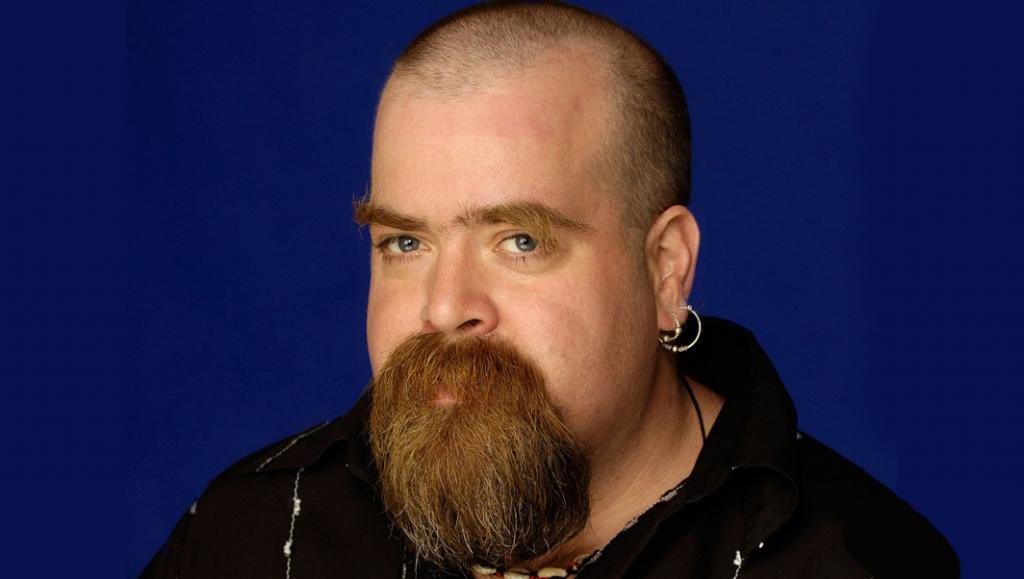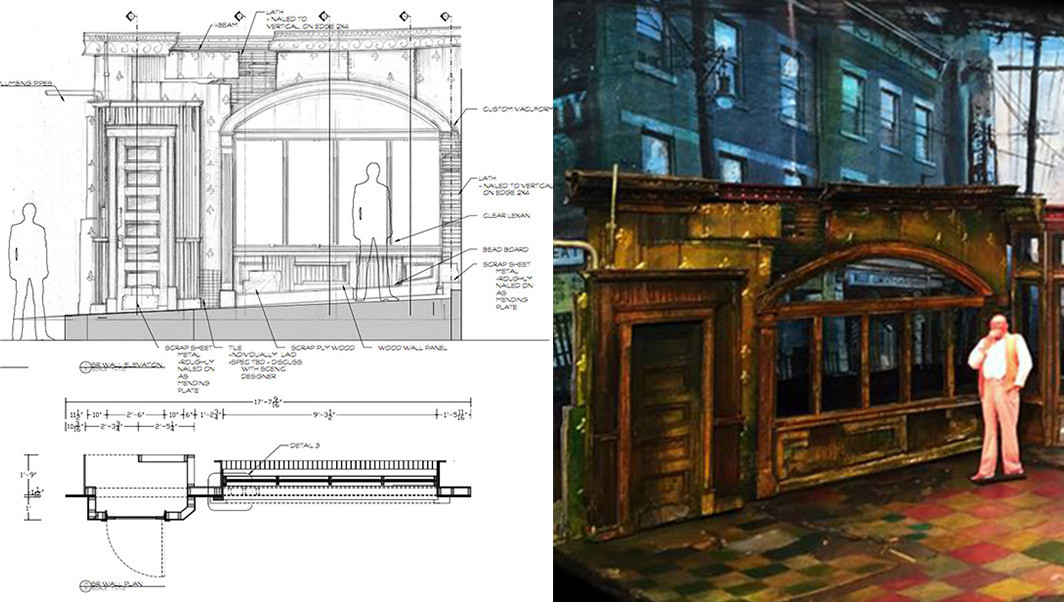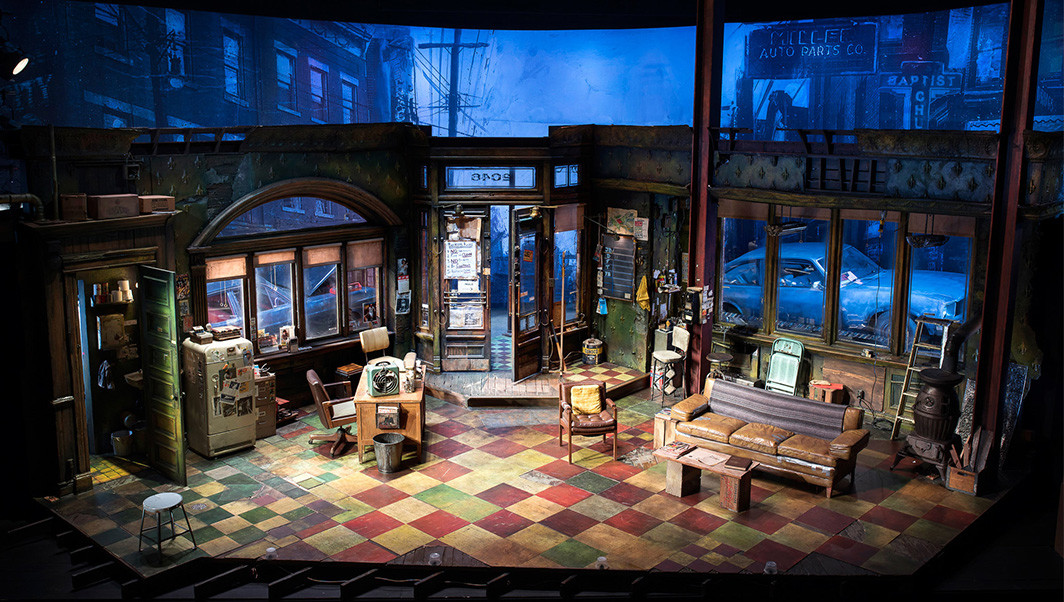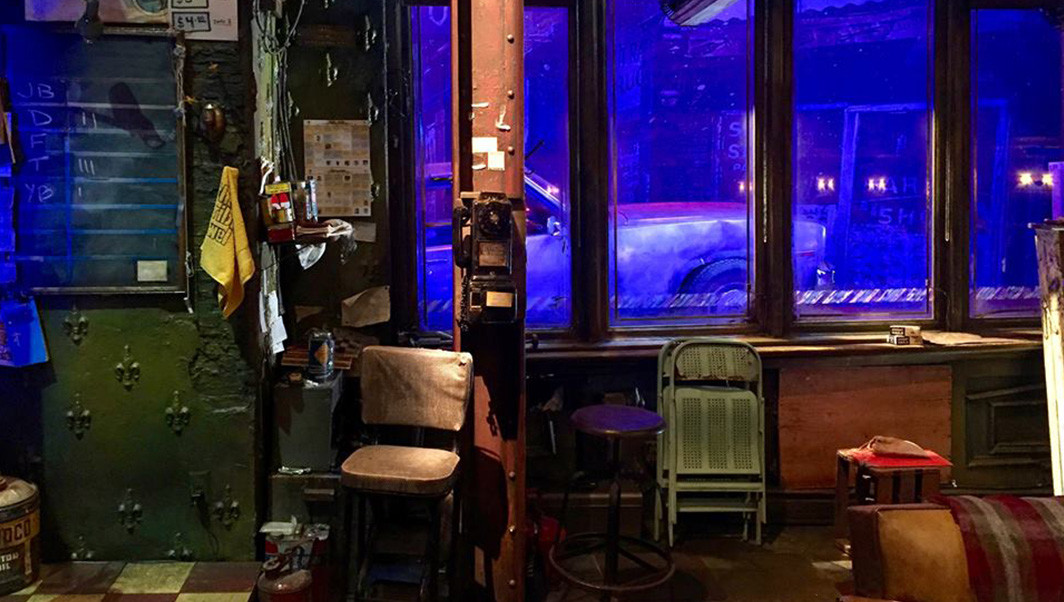Pop Culturalist Chats with David Gallo

Scenic designer David Gallo has a portfolio chock-full of critically-acclaimed work. Currently, he’s being recognized with a Tony nomination for his set design for the revival of August Wilson’s Jitney. A frequent collaborator of playwright August Wilson, Gallo was able to use that experience as a foundation along with his past design (he designed the previous production as well) to create a set for Jitney that was fresh and embodied the characters.
David Gallo’s work doesn’t only live on Broadway, though. He has designed for various regional theaters, music concerts, and television. In fact, he recently was awarded the 2017 Daytime Emmy Award for his production design on Season 46 of Sesame Street.
We chatted with David about his design process and bringing Jitney to life for the second time.
PC: Let’s start at the beginning. When did you know you wanted to make set design your career?
David: When I was 11, the movie Star Wars came out, and I was impressed by it. I was a huge fan. I had always had a strong interest in science fiction films and that genre, but what George Lucas did was publish books that had all of the archives from the art department. He published the concept art that was done for that film, the draftings for the set, and the developmental sketches. So I was able to see, at 11 years old, that people created these alternative universes. That was exciting to me, and I started replicating those drawings and developed a huge interest in film, production design, and cinema. When I was in the ninth grade I discovered the drama club, and I became a theater guy. I’ve been a sort of theater guy ever since.
PC: When you start on a new project what is your basic process like?
David: Well, the great thing about every new project—especially if it’s a new play or musical or something that’s never been done before—is that you have a blank canvas. Believe me, it’s completely blank. You probably have an empty theater somewhere that you have to do something with, but that’s about all you know. So the process varies based on my response to the material itself, but it almost always begins with a lot of research. I just create files and files of different things that I respond to based on the text. That can be literal research of the actual time or place that the show might be taking place in, or it could be from a purely conceptual angle. So, research is the first step for pretty much everything.
PC: Do you find working on a piece based on a true event or person more challenging to work on rather than something set in an entirely made-up world?
David: No, I don’t think that it’s more or less challenging; there’s just interesting and different challenges within each. I did a production of A View from the Bridge years ago, and that takes place in a very specific neighborhood in a very specific part of New York City (Red Hook, 1950s). It’s got a very particular time and place attached to it. When I designed that show, it was all fairly abstract because that made sense for the American-Tragic approach that that play has. So what I ended up going with for that design was stuff I responded to visually—pictures of completely different seaports other than the Brooklyn Red Hook area. But, if I respond to [a show] and try to do something very realistic like I did with The Mountaintop [a play about Martin Luther King], I went to the Lorraine Motel [where Martin Luther King was assassinated]. I spent a couple days measuring and photographing the actual hotel room that King had and then replicated it in great detail. So, those two things are very different approaches…but it’s the same amount of work!
PC: Since you worked on an earlier production of Jitney, were there a lot of updates and changes you made for this revival?
David: Well, this is all part of that blank page approach again. In this case, I was working with a new director. This design has a similarity to the one that I had done back then, but it’s a different director’s point of view. In many ways, this production is entirely stand-alone and doesn’t have anything to do with that other one.
PC: How does your relationship with a director effect the design choices you make? You worked with August Wilson for quite some time.
David: Well, the August Wilson influence [on productions] is identical because I only had those conversations with August one time. They will carry through every time I design a production. When we did [Jitney] in the 90s through the early 2000s, the director, Marion McClinton, had a very specific point of view so that production was his point of view with August’s thoughts. For this production, it’s very specifically Ruben’s [Ruben Santiango-Hudson, the director] point of view, but, again, with August’s thoughts. What was unique about this production is that both Ruben and I had spent a tremendous amount of time with August separately. We did work on one production together [in the past], but we both came into this with our memories of our conversations with August, then worked together on this, and made our own show which is cool. That’s the way it’s supposed to be.
PC: Were there any particular ideas that you had for Jitney that had to change after discussing it with Ruben?
David: Oh yeah, absolutely. A big part of this production was that I had done the set in a fairly dilapidated style. It’s all very, very worn. You can see the history of the set—all the years it was a barber shop, a butcher shop, a beauty salon. You can see that history. So, I designed a set that is extremely worn and blighted. Ruben told me something that had not really occurred to me. He said that each one of these [characters] have very specific skills with certain trades. Dove is an electrician. We have others that are carpenters. These men have these particular skills, and they’re the ones that are trying to hold this neighborhood together. So, Ruben felt there should be a lot of evidence of repair on the stage. So, that’s a very different point of view [from what I had]. Once I understood, we put a lot of effort into it. If you look at the set now there’s repair all over the stage; that was me adapting to someone else’s conception of what this environment was. It’s just a slight realignment, but it’s a very specific illustration of how one director’s point of view is very different from another’s—and they’re both equally valid.
PC: Do you have a favorite part of your design for this production?
David: Telephones. This play is about the call. They’re all sitting around waiting for the call. This play, in it’s simplest form, is a telephone, a door, and a place to sit. So, my favorite part of the stage is the phone. It’s attached to that enormous eye beam—which is not a realistic eye beam—that’s symbolic of all of Pittsburgh. [It’s symbolic of] the roots and homes of Pittsburgh, and the telephone is attached to it. It’s a great image, and it also really works practically because the actors go 360 around the telephone which allows us to stage the telephone calls in interesting ways. A lot of this play is done with people on the telephone which is sort of unusual.
PC: Across all of your designs, do you have a favorite production you’ve worked on?
David: I don’t know how you pick a favorite. I have shows that I enjoyed more than others, but they don’t relate to the concerts that I’ve enjoyed more than others. I think the Madison Square Garden New Year’s show—where I put Phish’s original tour truck in the middle of MSG and they played on top of it—was one of my favorite moments of the last ten years. It might be my favorite moment of the last two years, actually. It was a great visual, but it also worked emotionally and conceptually with the band and the audience.
PC: Is there something you want audiences to take away—no matter what type of audience they are—from your designs?
David: Yeah…whatever it is the point of view the creative team is trying to accomplish! It sounds obvious, but I don’t want them to go away from every single one of my shows saying, “That was beautiful,” or “That was scary,” or whatever. I want them to just leave with whatever it is that we were trying to say in their hearts and minds. That to me is everything, and it’s not easy.
PC: Do you have a dream project you’d like to work on someday?
David: I’ve got a lot of dream projects, but I’m fifty so I’m doing them now! [laughs] I’m right now working on a number of dream projects, I guess you could call them. They’re things I’m writing and creating from scratch. Putting together whole productions that incorporate all my little dreams into one. In addition to all those dreams, I dream about someday doing A Streetcar Named Desire and Death of a Salesman.
PC: Ah, both big ones.
David: Yeah. And both the original sets of those being unhealthy obsessions of mine. So, someday, I would love to confront that demon and create my own Streetcar and my own Salesman.
Pop Culturalist Speed Round
Guilty pleasure TV show or movie
I’m obsessed with zombie movies and the zombie genre. I have been since I was a small child.
Favorite play or musical
My favorite musicals are West Side Story, Sweeney Todd, and Falsettos. My favorite plays are Death of a Salesman, Angels in America, and Joe Turner’s Come and Gone.
Favorite book
The Dramatic Imagination by Robert Edmond Jones
Song or artist you could listen to on repeat
“Fluffhead” by Phish
Hidden Talent
I’m a North Atlantic Ship wreck diver.
Photos Courtesy of David Gallo





Discussion about this post